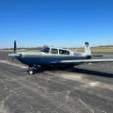Time limits for takeoff power.
-
Members Online
- CalebH
- TCC
- dzeleski
- takair
- C.J.
- 201er
- NotarPilot
- raymondscott0321
- Rwsavory
- DXB
- M20F-1968
- Guilly
- Florian Guthardt
- Sue Bon
- laytonl
- georgewdean1020
- kortopates
- FADEC
- bencpeters
- John J
- MDMooney
- Sabremech
- Fritz1
- chrisburdzy98
- tcal780
- IvanP
- Jeph357
- tailgator
- Hangar_46
- Griswold
- Mufflerbearing
- ArtVandelay
- 201guy
- Hank
- jamesyql
- MatthiasArnold


Recommended Posts
Join the conversation
You can post now and register later. If you have an account, sign in now to post with your account.